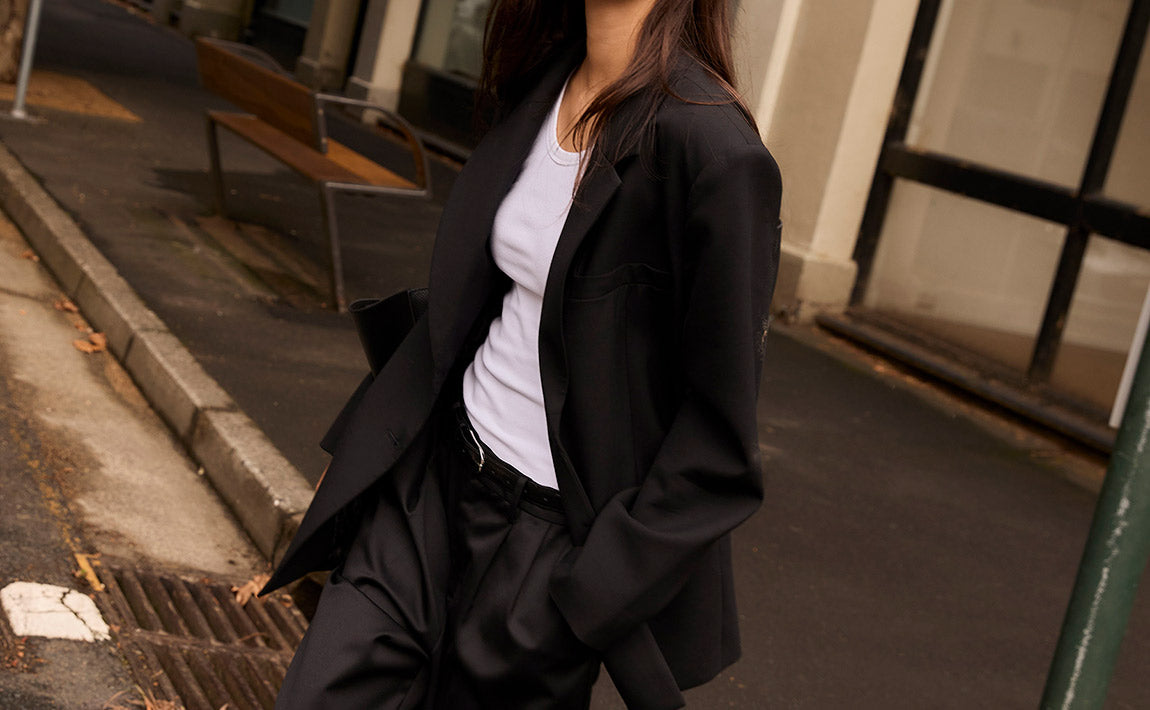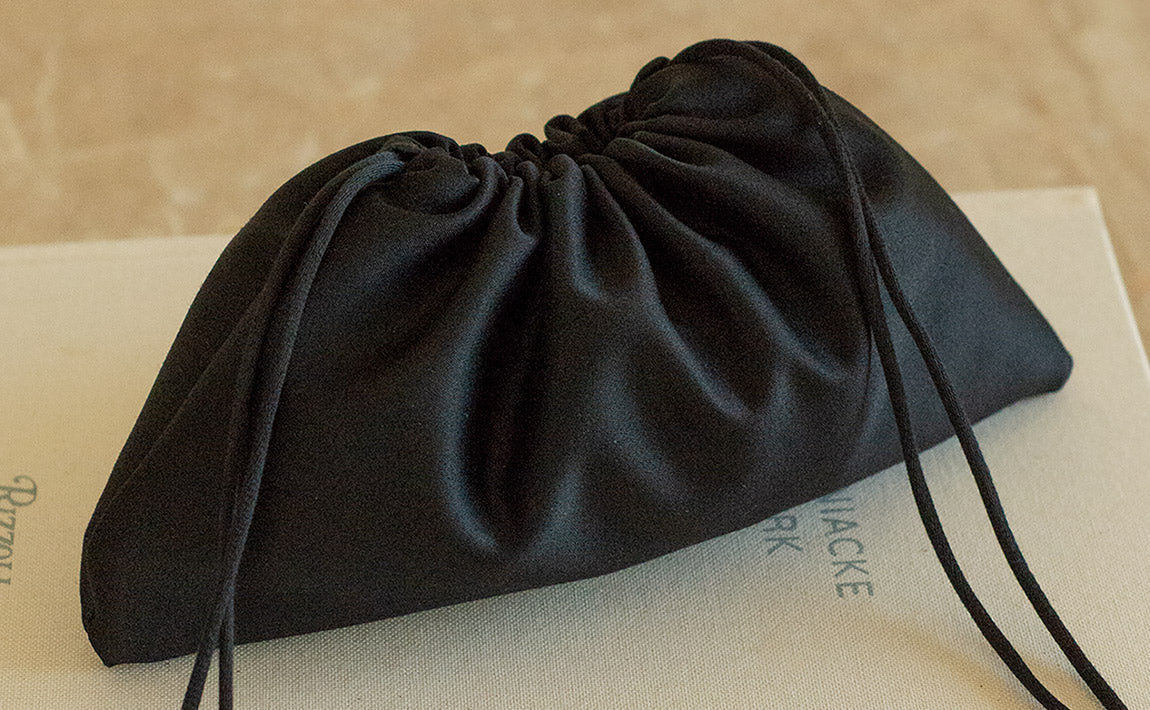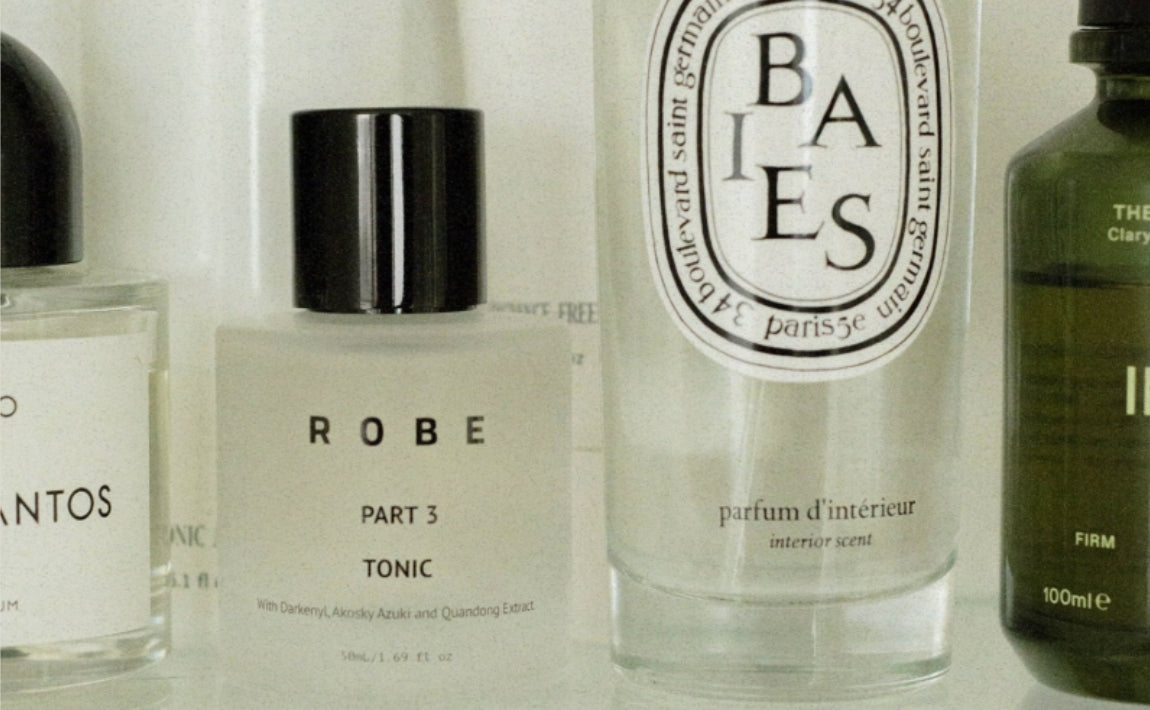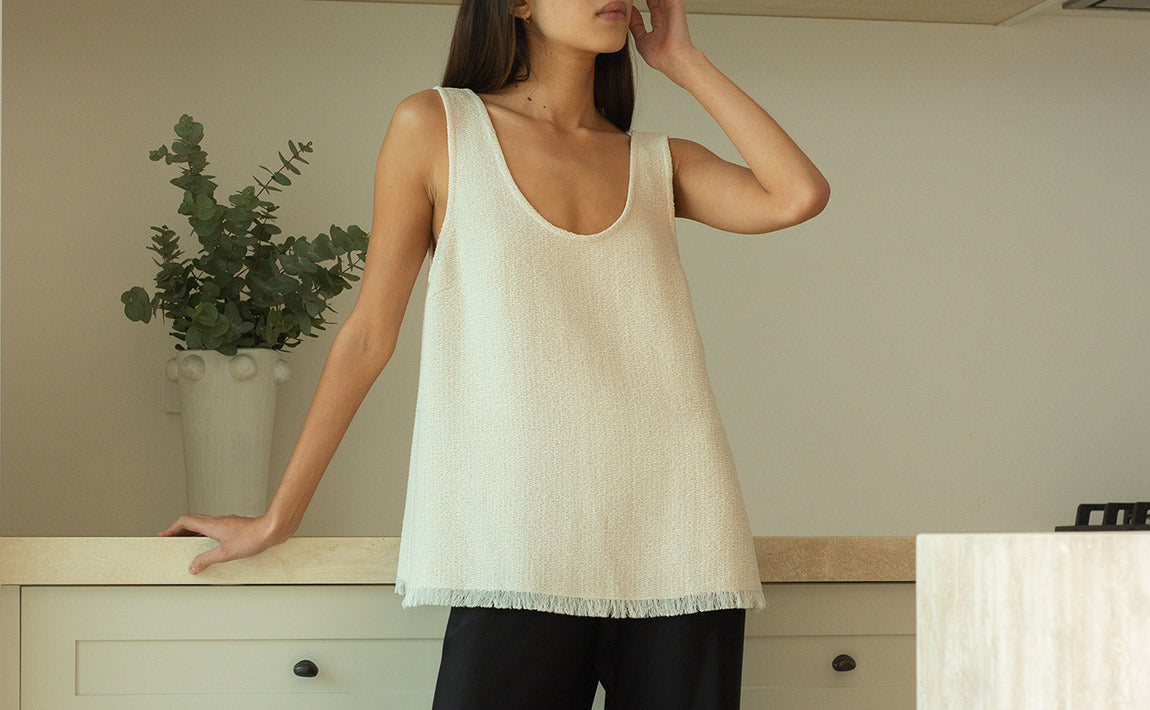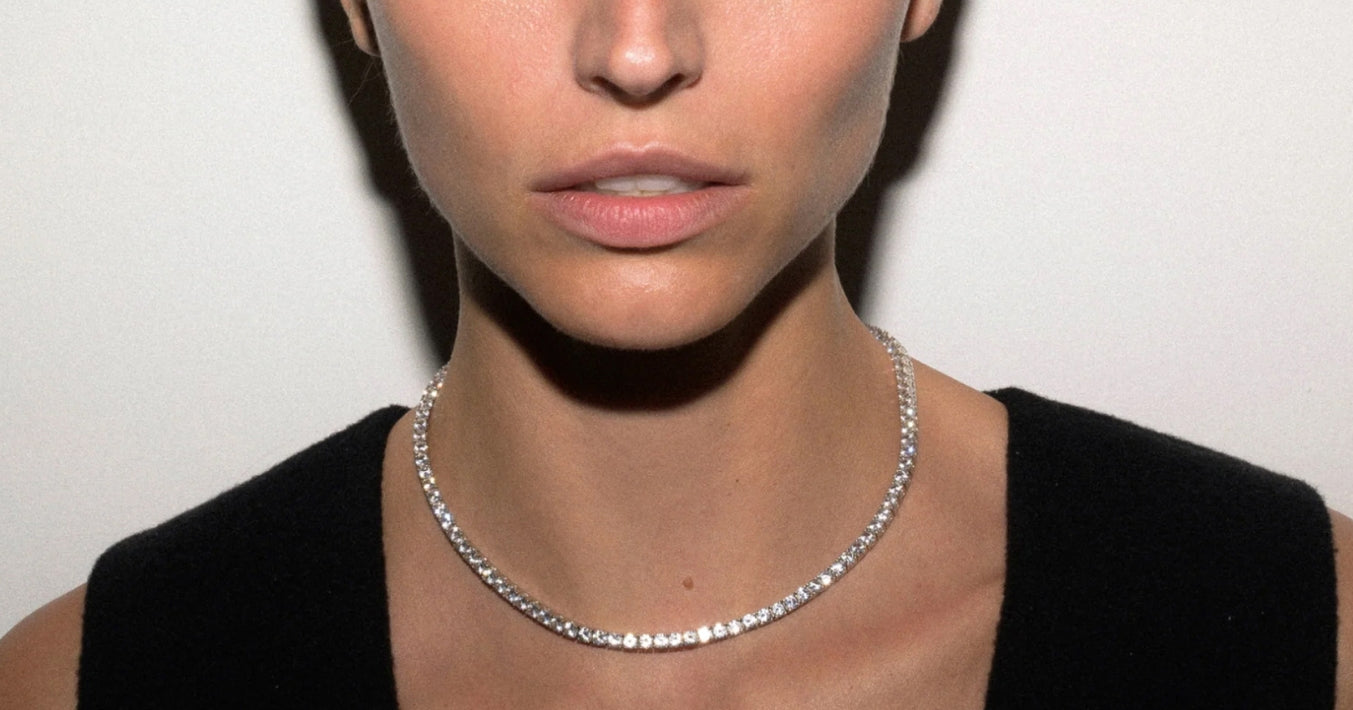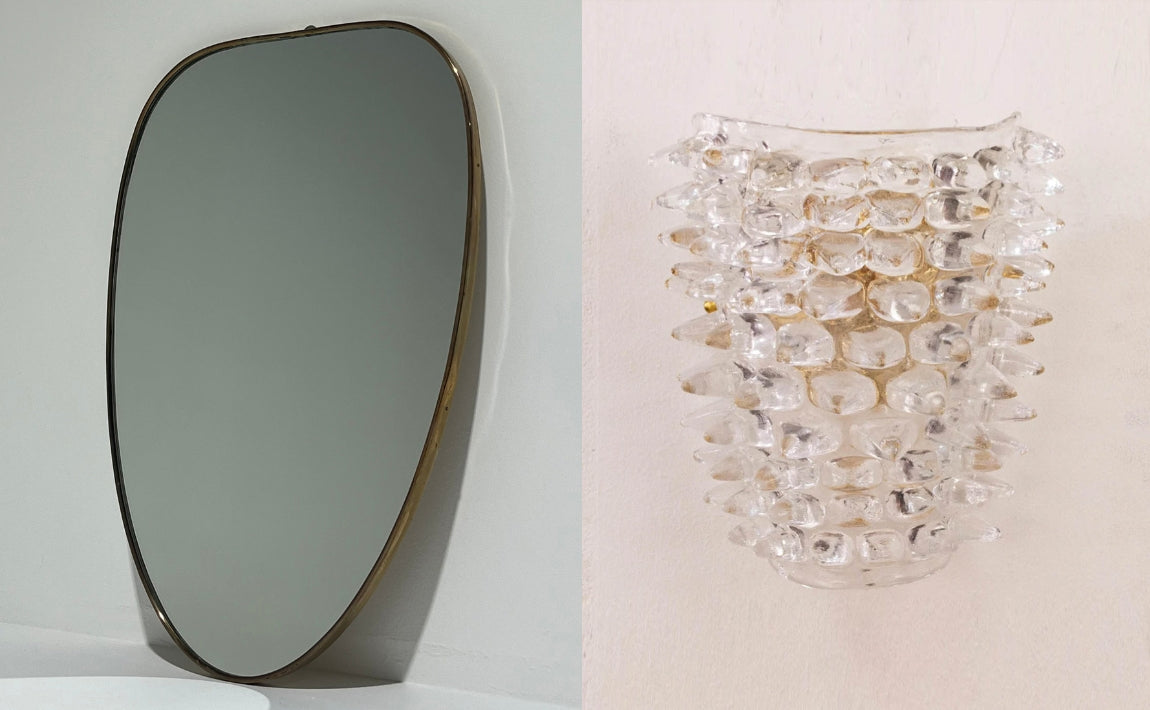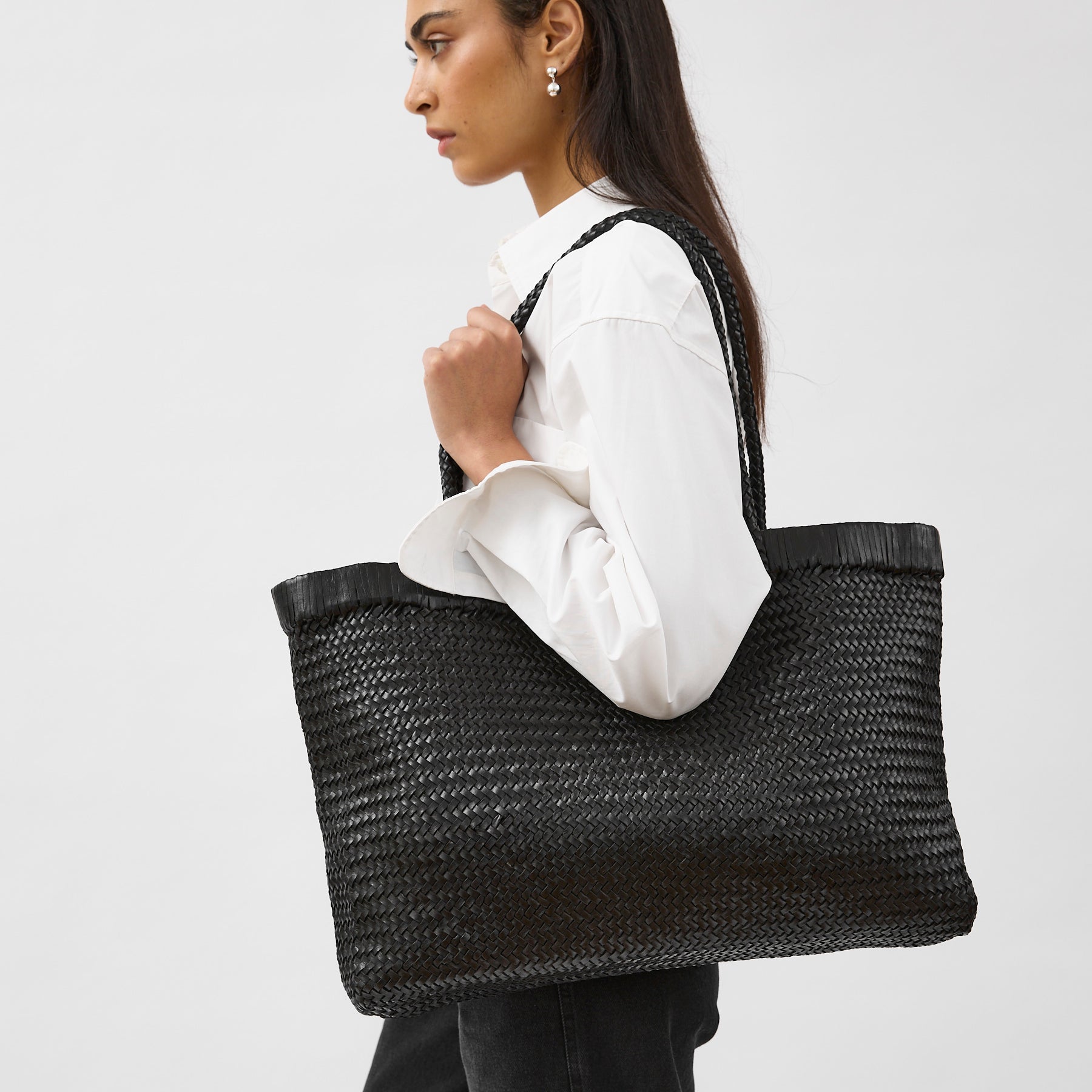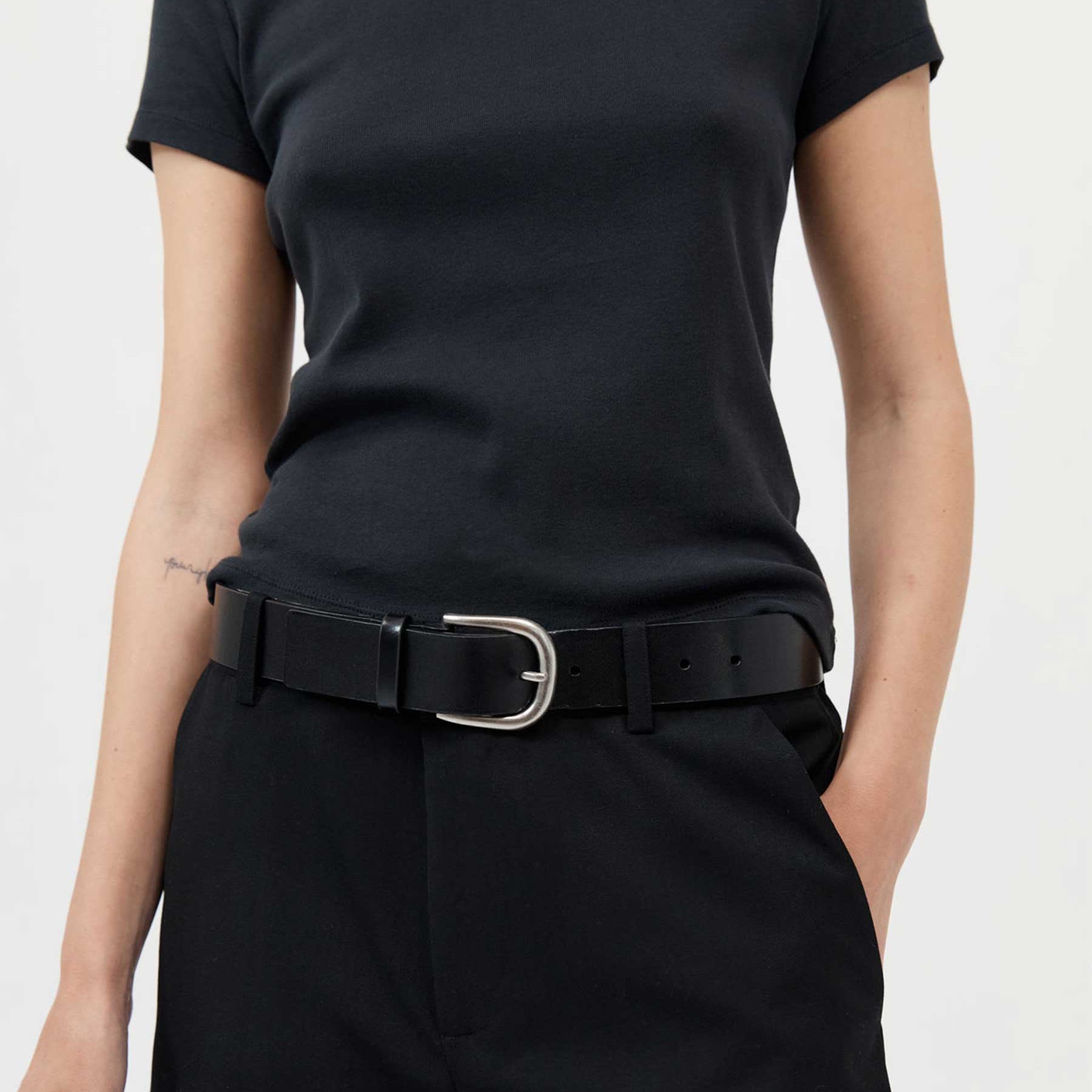Denim 101: Every Question You’ve Ever Had About Blue Jeans, Answered

It goes without saying — the blue jean is an essential in any wardrobe. No matter your aesthetic or the scale of your wardrobe, the blue jean is a timeless piece, one which promotes great style as much as it does ease and wearability, that will remain a staple for years to come. So an investment into the perfect pair (or, as is the case with most of those reading, pairs) is key.
And we’re poised to not only help you find said perfect pair, but also educate you in why exactly the blue jean is so iconic and deserving of a place in your closet, how exactly we’re styling them, the styles that are (and have always) proved popular, and how to care for what may be the most enduring piece in your wardrobe.
Here, read up on all you could possibly want to know about the blue jean.
What is the origin of blue jeans?
There exist some fascinating leads that trace blue jeans back to 17th century Europe — workers in Genoa favoured the textile for its durability, known at the time as ‘Genes Fustian’, while in Nimes, France, it was commonplace to find indigo-dyed fabric coined ‘de Nimes’, the city clearly lending its name to the term ‘denim’. But the prevailing history of the garment takes place centuries later, across the Atlantic.
In 1871, in the midst of the goldrush, tailor Jacob Davis was struggling to make garments durable enough for the miners he was helping to outfit. His first solution (and the first step to designing the denim jeans we know and love today) was to add rivets at the most common stress points of a pant, later adding a brown “duck cloth,” a type of canvas, to his design. Wanting to patent his particular design following its instant success, Davis turned to German-born businessman, Levi Strauss, to help back his innovation. And while the pair hadn’t themselves invented denim, they certainly helped to popularise the textile.
As time went on, the Levi’s name soon became associated with durability, ruggedness, and eventually sartorial leanings with the eventual introduction of a new, and more flexible, fabric in blue denim in combination with riveted reinforcements, a choice that saw the fate of blue jeans sealed as one of the most widely worn garments in fashion history, one which is imbued with much meaning.
According to Vogue, by the 1930s, blue jeans began to flood American popular culture through the Western film genre, an era which coincided with the wear of denim work pants in leisuretime. From there, the blue jeans became an important vessel for political and social messaging. By the 1950s, the on-screen rebel likes of Marlon Brando and James Dean sparked a teen frenzy around the garment, seeing the garment popularised in the teen demographic. In the ’70s, the garment was a staple for the hippie generation, which continued the rebellious and anti-establishment messaging proliferated by the generations that came before. Fast-forward decades — through the stretch-denim ’80s, the high-low ’90s, the low-rise, and eventually boho, ’00s to today — the wear of blue jeans is as widespread as ever, and the industry it has fostered continues to balloon.
Products L-R: Marle Wide Leg Jean, Marle Kendall T-Shirt, St. Agni Wide Bagu, St. Agni Classic Buckle Belt, A.Emery Pae Sandal.
What is the most iconic pair of blue jeans?
Given its prevalence in not only the invention, but the popularisation, of blue jeans, it should come as no surprise that Levi’s created the most popular, and timeless, pair of denim that remains a best-seller to this day.
You may not know this, but the Levi’s 501 style — signified by its straight-leg silhouette, long-line in-sem, and button fly fastening — has been around since 1873, and has played a large part in popularising denim outside of the workwear category into widespread wear. Epitomising the power of fashion democracy, it’s this particular pair of denim that’s been worn by blue collar workers and stars alike. Vogue has cited that the likes of Marilyn Monroe, Cindy Crawford, Debbie Harry and Cher have all showed favour for the style in the past, with their modern-day equivalents — including Bella Hadid, Hailey Bieber, and Kaia Gerber — keeping the style within the sartorial zeitgeist.
And it’s no wonder why the style has endured — in the midst of the many cuts of denim that enter and exit the trend cycle, from the ultra-skinny jean to the baggy dad jean — it’s classic straight leg that remains the constant. The classic 501, with its high-waisted fit and longer in-seam, has also lent to a universally flattering fit and great versatility within your wardrobe. Perfectly worn with a plain white t-shirt and loafers, or even a structured blazer and slingback heels, there’s truly nothing the 501 can’t be worn with.
Not to mention their prevalence in the piles of denim in vintage stores, their ever-presence yet another testament to the durability the style was first built on.

Products L-R: St. Agni Organic Cotton Classic Tee, Unconditional Magazine Issue 10, Re/Done 90s High Rise Loose Jean, Flamingos Life Classic 70s, Lié Studios Elly Bracelet.
Why is denim mainly blue?
While the choice may seem entirely aesthetic, the reasonings behind making denim blue are many.
While jeans were initially made from brown “duck cloth”, as mentioned above, it wasn’t long before blue jeans became the popular choice, offering comfortability and durability in equal weighting where the once-popular alternative was considered stiff and less wearable.
Around the time jeans were increasing in demand, blue dye (more specifically, Indigo) was being imported from India through the textile trade. Not only was the dye prevalent at the time, it also was found to leave a distinctive effect on denim when dyed — given the unique weave of the textile, only the transverse (or ‘weft’) thread is coloured with the application of Indigo dye, lending to the blue jeans’ signature dimensional finish. This particular dye process also allowed for the denim to become softer and softer with each wash, while still maintaining the fabric’s durability.
Who are the ultimate denim muses to look to for blue jean styling inspiration?
While there is no shortage of inspiration when it comes to styling blue jeans, there are a few points of reference we find ourselves coming back to.
One of our enduring denim muses is a ’70s Jane Birkin. While the eponymous Birkin bag comes to mind when reflecting on the late actor’s style, it was a great pair of blue jeans that formed the foundation of her je ne sais quoi aesthetic. In fact, she wore the very same pair of high-waisted blue jeans for years. Opting for a pair with a slight flare — a signature style of the time — Birkin often styled her blue jeans with a simple white cropped t-shirt, button-down shirt or a clingy sweater with a pair of sandals, simple sling-back heels or even wore them while barefoot, accessorising with a simple belt. The blue jean remained a staple in Birkin’s wardrobe for decades after.
While she may not have been Parisian born, Birkin soon naturalised, her dual identities seeing her remain a global poster girl for French fashion to this day. But while the most stylish French women today clearly still take inspiration from Birkin’s own sartorial configurations, they’ve truly made the blue jean their own, leaning on a few tried-and-true combinations with the classic piece at its centre. One popular outfit often worn by French girls is the button-down cardigan (note: it must cling to the body), tucked into the waistband of blue jeans, and accessories with either a ballet flat or a closed-toe flat slingback. Another configuration is a button-down worn tucked into a pair of wide-leg blue jeans, also styled with flats and often topped off with a cashmere sweater worn around the shoulders. Each of these arrangements can also be worn with a block heel, heeled mule or a boot, as well as a camel trench layered on top in the cooler months.
Similarly adept at styling the blue jean are the Scandi style set — sisters, style icons and founders of Lié Studio, Amalie and Cecilie Moosgaard, have offered a masterclass on blue jean styling on more than one occasion. The tank top tucked into a pair of dark wash, loose-leg jeans and accessorised with ballet flats, a structured blazer and a strappy sandal, an oversized button-down loosely tucked into a wide-leg jeans and worn with boots, a chambray shirt tucked and belted into a pair of straight-legs and topped off with low pointed pumps — these is no shortage of blue jean inspiration when it comes to the Moosgaard sisters.
Products L-R: Marle Della Top, St. Agni Petit Bagu, Slvrlake London High Rise Straight Jean, Edie Collective Jane Loafer.
Are blue jeans a wardrobe essential?
We could wax lyrical about why exactly the blue jean is a wardrobe essential, but we’ll attempt to distil our deep reasoning to a few key points. The first is the ease that the blue jean brings to not only to the look, but the feel, of an outfit; easily slipped on, effortlessly chic, and able to be styled with nearly every top and accessory in your wardrobe, you’re guaranteed to feel comfortable and confident in any outfit that’s centred on the blue jean.
The second is the adaptability of the blue jean to almost every occasion in your calendar; whether it’s a day in the office (worn with a slightly oversized blazer and ballet flags), a coffee-catch up with a friend (styled with a button down collared shirt and a simple sandal) or colleague, or an evening out with your partner (paired with a silky blouse and low pointed pumps or a pair of heeled mules), the blue jean remains a steady centre to any outfit configuration, from dressed up to casual.
What jeans are in style in 2024?
When it comes to the blue jeans that are proving most popular in 2024, there are a few key silhouettes that we keep seeing. The first is, of course, the mid-waisted straight leg jean, the most timeless and widely appealing style of them all. The second is a wide-leg jean — not too wide, but a pair that gives the illusion of the jean gently draping off the hip — in both a mid-waist and low-slung waistline. And the third is a ‘loose-leg’ jean; the midpoint between a straight and wide-leg jean, this cut is a little more generous in the leg without feeling too overwhelming on the frame.
What style of blue jeans are the most popular, and that never go out of style?
We all have our preferred cuts and silhouettes, but the straight-leg blue jean is without a doubt the most enduring style of them all. From its timeless cut to its always complementary fit and comfortability without a compromise on structure, if you’re only investing in a single pair of new jeans, make the straight-leg blue jean the one style you look to.
Products L-R: Marle Aida Top, Re/Done High Rise Stove Pipe Straight Leg Jean, Rylan Soft Baguette Bag, A.Emery Nodi Sandal.
What are the rules for washing denim?
The overarching principle when it comes to washing, and caring for, your jeans, it’s that less is more.
The first rule when it comes to caring for your blue jeans — and denim in general — is to wash them as little as possible. Levi’s recommends washing them no more than once every 10 wears as a maximum to ensure you’re not only maintaining the colour but also the fit of your jeans.
If you do need to treat certain areas or single stains, opt instead to spot clean your blue jeans with a mild cleaner.
The second rule is, if you absolutely need to wash your blue jeans, turn them inside out and wash them on a cold wash, which will not only preserve the colour of your denim and help protect it from fading, but also avoid any potential shrinkage.
The third, and just as crucial rule, is to air dry your blue jeans following a wash. Again, turn your jeans inside out to avoid fading or bleaching by sunlight and to ensure your pockets properly dry, and hang them out on a clothesline to avoid not only shrinking that often comes with tumble drying, but also warping of the silhouette and the lessening of the denim’s integrity. In fact, airing your jeans in the sunlight is a great alternative to maintaining your blue jeans in between washes, freshening them up with air and sunlight, the latter also working to remove bacteria from the garment.
No matter your style era or your sartorial leanings, the blue jean is a piece that you’ll come back to time and time again. Once you’ve found your dream silhouette and cut — and thanks to the endless options, you absolutely will — you’ll find yourself working the blue jean into any outfit and occasion you can.
Investing in a blue jean (or another pair of blue jeans) isn’t frivolous, but rather an investment in a timeless piece that, if you’re anything like Jane Birkin, will be with you for years to come.

